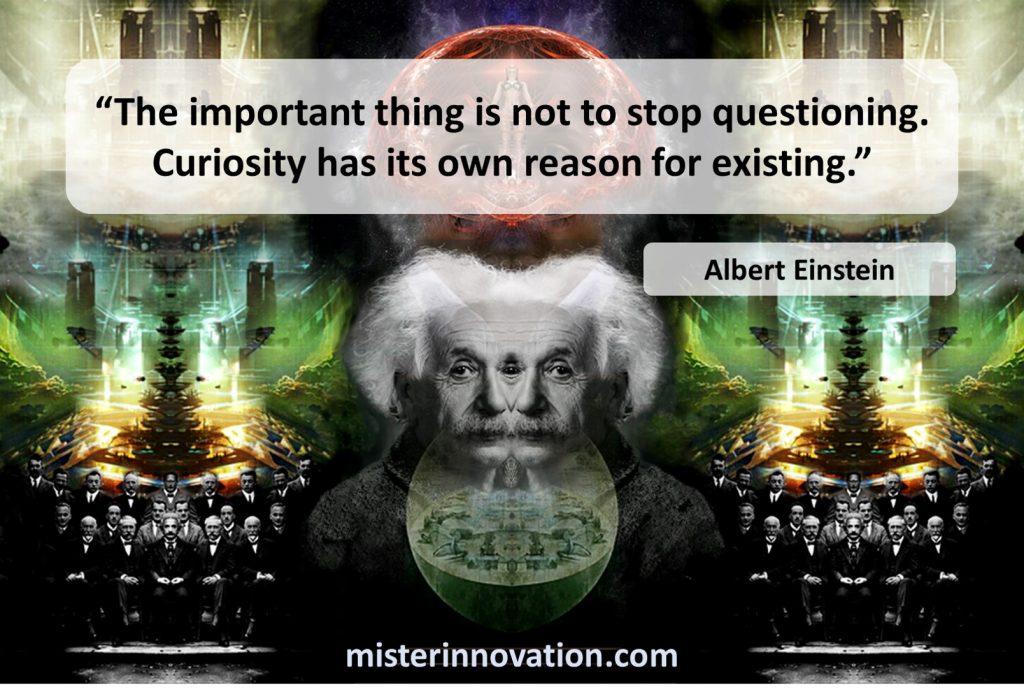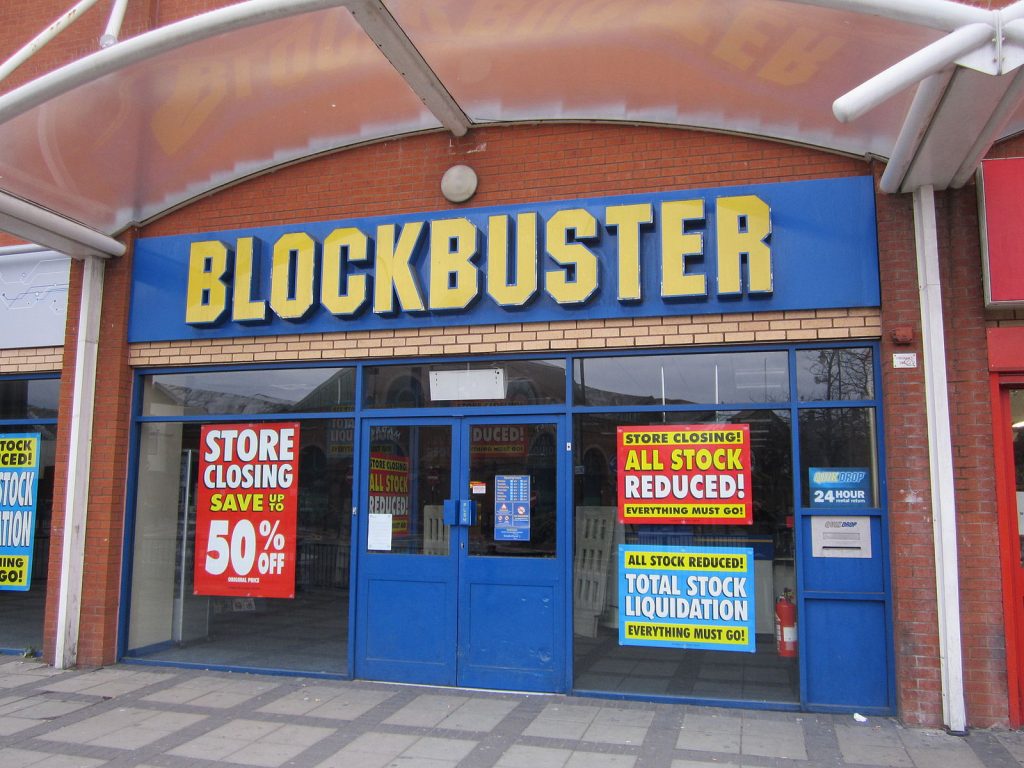
GUEST POST from Greg Satell
When H.G. Wells was born in 1866, there was no electricity or cars or even indoor plumbing. Still, his active imagination conjured up a world of time machines, space travel and genetic engineering. This was all completely fantasy, but his books foresaw many modern inventions, such as email, lasers and nuclear energy.
It’s no accident that people who invent the future are often fans of science fiction. In fact, in Leading Transformation, the former head of Lowe’s innovation lab explains how he hired science fiction writers to help inspire the company to leverage virtual reality and build a new future for the company.
To create anything truly new and different, you often need to discard the constraints of the present. Yet that comes with a problem. How do you transform fantasy into something real and useful? What makes great innovators truly different is how they combine imagination with practical problem solving in order to bring even the wildest pipe dreams into reality.
How A “Memex” Machine Became The Internet
“Consider a future device for individual use,” Vannevar Bush wrote in The Atlantic in 1945, “which is a sort of mechanized private file and library. It needs a name, and, to coin one at random, “memex” will do. A memex is a device in which an individual stores all his books, records, and communications, and which is mechanized so that it may be consulted with exceeding speed and flexibility. It is an enlarged intimate supplement to his memory.”
It was an unlikely vision for the time. The first computers were just being developed then and were themselves somewhat impractical devices, which is why Bush imagined that the memex would be based on microfilm. Yet Bush was no inveterate dreamer, but in many ways the architect of America’s path to scientific dominance and people took him seriously.
One of those was a young radar technician stationed in the Philippines named Douglas Engelbart, who would return to school to study electrical engineering. It was that expertise, along with Bush’s vision that led him to think of computers, still primitive at the time, as machines that could do more than merely calculate, but “augment the human intellect.”
Engelbart would showcase these ideas in what is now known as the Mother of All Demos in 1968 and Xerox began an enormous research project to bring his vision to market. By 1973, a functional prototype, called the Alto, was built and, a decade later, a young entrepreneur named Steve Jobs would use it to create the Macintosh. The world was never the same.
When Feynman Found “Plenty Of Room At The Bottom”
Richard Feynman was an usual scientist, known almost as much for his pranks as he was for his discoveries. So few were probably surprised at the unconventional title for his address the American Physical Society a few days after Christmas in 1959, There’s Plenty of Room at the Bottom. It was something they had come to expect from the young genius.
Feynman’s fantasy was not unlike Bush’s, except that it was more ambitious. While Bush imagined putting all the world’s knowledge on microfilm, Feynman imagined writing the entire 24 volumes of the Encyclopedia Britannica on the head of a pin. It was just the sort of impractical idea that usually gets people thrown out on physics conferences, not given the stage.
Yet Feynman immediately got down to brass tacks. He proposed using an electron microscope as a writing tool, much like a cathode ray oscilloscope projected images on television screens at the time. He then asked if we can write things on a microscopic scale, why not build things too? Again, he identified problems and proposed potential solutions.
That day, almost single handedly, Feynman invented the field of nanotechnology, although that term wasn’t coined until 1974. These days we use it to etch transistors in silicon wafers to make computer chips and create advanced materials for things like solar cells. Yet the truth is that even now, 60 years after that initial talk, we are just beginning to scratch the surface of Feynman’s vision.
Spacemen, Cavemen And Small World Networks
In the late 1990s, a young graduate student named Duncan Watts was struggling to understand an obscure phenomenon that had baffled scientists for centuries. Known as coupled oscillation, it was a mysterious force that allowed a disparate group of entities, like pacemaker cells in the human heart or certain species of crickets in a forest, to synchronize their behavior.
Nobody could figure out how it worked. Was there some kind of leadership structure with “conductor” leading the synchronized orchestra? Or maybe some complicated web of influence? As much as he pored through the research, tracked the chirping of crickets and tested out formulas to describe behavior, he was still baffled.
What helped break the logjam was two books by the science fiction writer Isaac Asimov. In the first, Caves of Steel, people lived in underground caves and, while everybody was connected to everybody else in their cave, they knew no one outside of it. In the second, The Naked Sun, space colonists led a hermit-like existence, linked to others only through long-range connections.
Neither of these, of course, told Watts anything about pacemaker cells or crickets, but it allowed him to reframe the problem as one of relationships. By imagining the two extremes of the cave people and the space colonists, he was able to come up with a model of relationships that led to the mass synchronization of coupled oscillators.
The paper he would write based on his fantasy-inspired formulas would prove to be a landmark. It would establish an exciting new field of small world networks and lead to a new era in the science of how things are connected, helping to transform fields as diverse as neuroscience, epidemiology and computer science.
Venturing Into The Visceral Abstract
Today we are beset with an dizzying array of problems in the world, climate change, income inequality and the rise of authoritarianism being just a few. Successful businesses face extinction by a seemingly endless wave of disruptions ranging from new technologies to new social phenomenons. It can all seem overwhelming.
It’s important to view these problems from a practical perspective. Each needs to be solved within constraints of economics, politics and competitive pressures. Yet it is also important to realize that the solutions to tough problems will rarely be found in the realm of our experiences. If a solution to any of these problems already existed, they wouldn’t be such tough problems.
The only path through that troubling tautology is fantasy. Once we have exhausted the realm of the possible, we often must venture into the realm of the impossible to see a new direction. A memex machine, a world with “plenty of room at the bottom,” cave societies and space colonies were all ideas of little practical import at the time they were conceived, but benefit us today in important ways through the discoveries they inspired.
We need to accept that we live in a world of the visceral abstract, where the technologies we use to solve the practical problems in our lives are all based on what were once considered utterly impractical ideas. That means to make an impact on reality, we often need to indulge ourselves with fantasy, identify a different path to travel and then begin the work anew.
— Article courtesy of the Digital Tonto blog and previously appeared on Inc.com
— Image credit: Pexels
![]() Sign up here to join 17,000+ leaders getting Human-Centered Change & Innovation Weekly delivered to their inbox every week.
Sign up here to join 17,000+ leaders getting Human-Centered Change & Innovation Weekly delivered to their inbox every week.








